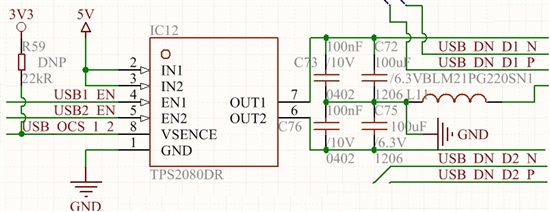Hi There,
Here is a piece of Bug for you crush:
We have designed a board using TPS2080D. In this design, it is very crucial that the chip sets the OC-Signal when the Load requires current over 1A. All USB-Ports seem to work just fine. The thermal short down function works also fine.
However, i am missing the active low signal of the OCS! Just like in the datasheet, I used 4Ohm Load, the OCS-Pin remains always High! Same with 3Ohm Load, 2Ohm Load already sets the thermal short down function.
My question at this point is, was this actually tested as described in the Datasheet?
If yes, I would appreciate every surgesstions towards getting this issue cleared as quickly as possible.


